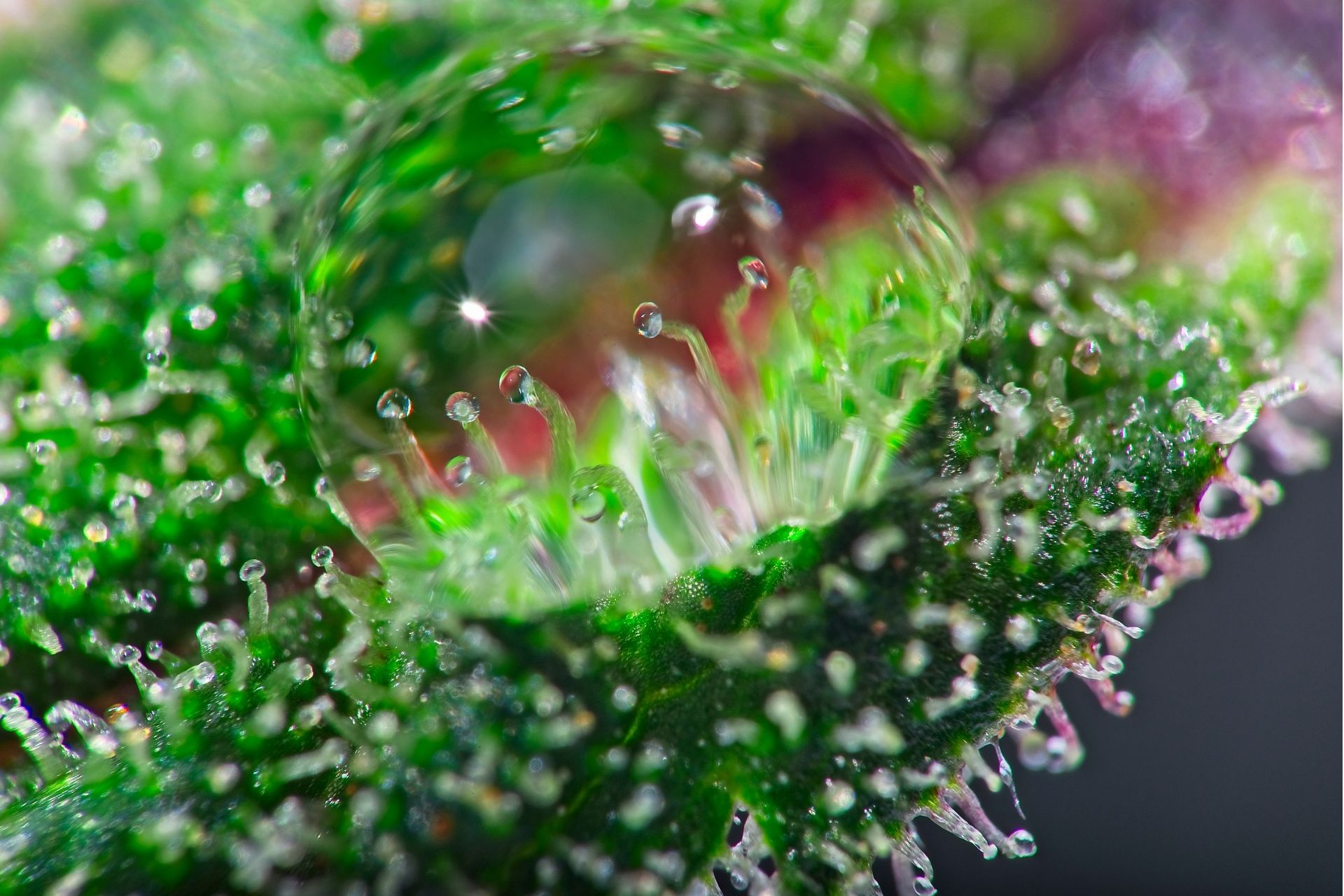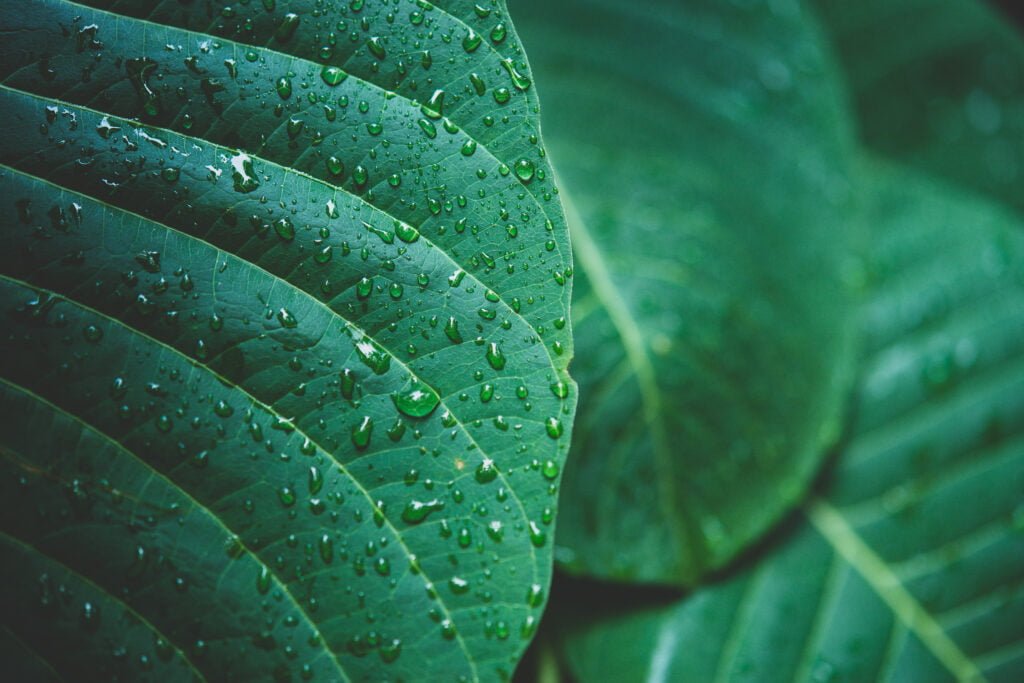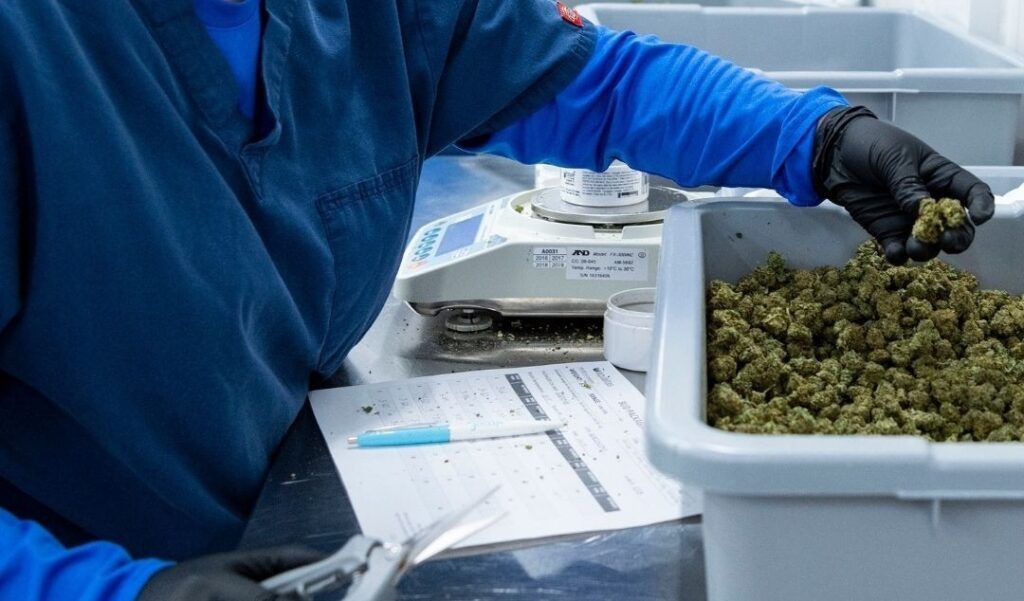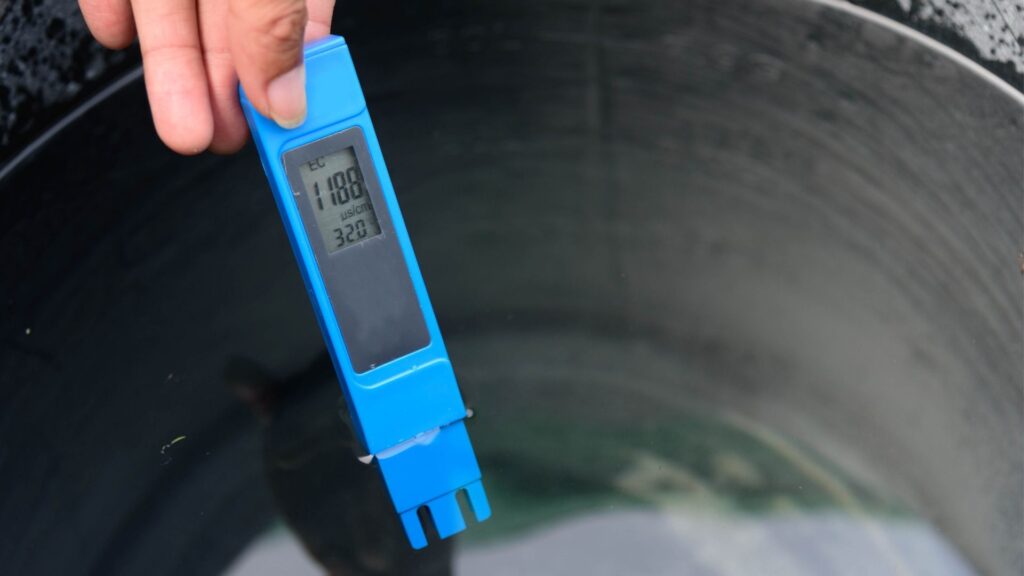Monitoring Cannabis VPD For Healthier Plants
Every cannabis grower knows about the essential three-letter acronyms of THC (Tetrahydrocannabinol) and CBD (Cannabidiol). They’re the main goals of much of the cannabis industry.
But do you know about VPD (Vapor Pressure Deficit)? You should, because if you start adjusting and monitoring cannabis VPD, you’ll produce bigger, healthier cannabis plants, and thus more THC and CBD!
To help explain VPD, Coleman Retzlaff, Sales Manager for QUEST Dehumidifiers, gave a clear and compelling presentation at the 2021 The Grower’s Source Expo on what VPD is, and how to use it to grow healthier cannabis plants.
There is some fairly complicated math involved in calculating VPD, which results, according to Coleman, in a good number of cannabis growers misunderstanding what VPD actually is.
“What I wanted was a simple layman’s terms discussion regarding vapor pressure deficit. What it means to the grower, what it means to the plants, what its net benefits are. Because I think a lot of times there’s a lot of people that throw around the concept, ‘Oh yeah, my VPD is …’, they talk about it like they know what they’re talking about. But oftentimes I think they’re just a little smoke ears regarding truly understanding what it means at the end of the day.”— Coleman Retzlaff, Eastern Canada and East Coast Regional Sales Manager for Quest
Coleman sidesteps the complex math, saying that a simple view of VPD is that it:
- Helps identify healthy moisture conditions at a variety of temperatures
- Directly correlates to transpiration rates
- Helps us fine tune water/nutrient flow through our plants (which affects growth and disease prevention)
So what is VPD? Let’s break it down:
- VAPOR: Air holds several gasses (such as Oxygen and Nitrogen), and one of those gasses is water vapor, which is the water evaporated into the air.
- PRESSURE: You’ve heard of the term barometric pressure when describing the weather. Similarly, the amount of water vapor in the air is described as pressure in VPD.
- DEFICIT: The deficit in VPD is the gap between the current amount of water vapor it holds, and the total potential amount of water vapor that can be held until it can hold no more.
- You can raise VPD by increasing temperature or lowering humidity.
- You can lower VPD by decreasing temperature or increasing humidity.
What makes VPD a better measurement than Relative Humidity for growers is that VPD is related to the transpiration rate of plants — so it’s a better guide to affect plant growth rate and to prevent mold and disease. Rather than just keep the grow room as dry as possible, you can better dial in the temperature and humidity levels that will produce better growing plants, while still preventing mold from taking hold.
Cannabis VPD and Transpiration
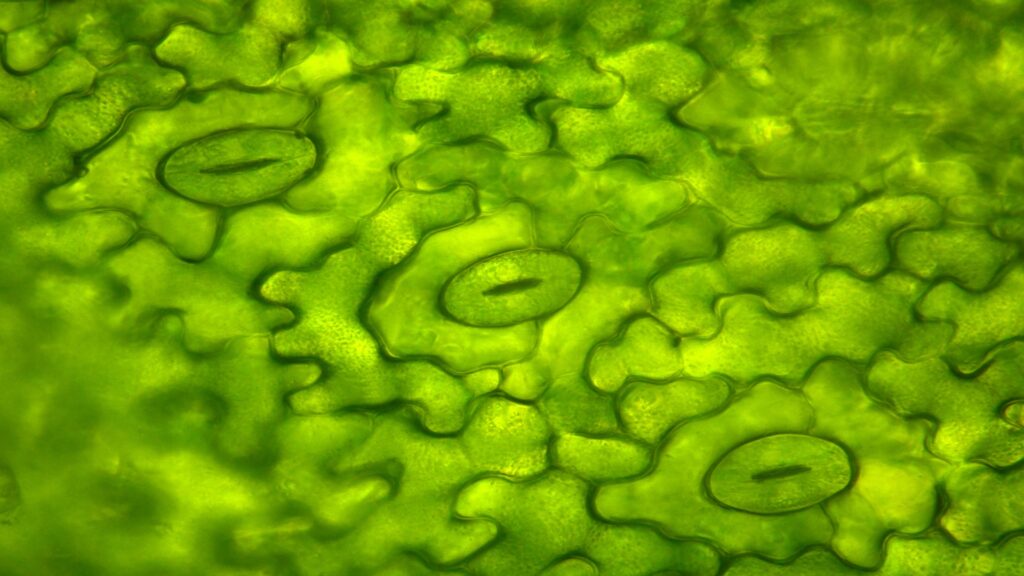
A key aspect of VPD is understanding transpiration. Transpiration is when plants evaporate excess water as water vapor. Transpiration acts like a siphon, sucking the water and nutrients via capillary action, up through the roots, into the plant, and out through the leaves’ stomata. Stomata are small, closable openings on the surface of the plant’s leaves. Almost all transpiration is via plant stomata on their leaves into the atmosphere. Plants retain very little water as part of their plant growth – most of the water exits the plant via transpiration. Coleman tells why that matters:

For those who want to dig even deeper into the science, here are greater details about SVP and AVP, components of VPD, provided directly from Coleman Ratzlaff.
The saturation vapor pressure (SVP) is the maximum amount of water vapor that can exist in air at some (any specified) temperature. The difference between the pressure of water vapor actually in the air, we’ll call this the actual vapor pressure (AVP), and the SVP of that same temperature air is called the vapor pressure deficit (VPD).
These 3 abbreviations are important to remember:
- SVP is saturation vapor pressure (this would be the water vapor pressure at 100%RH)
- AVP is actual water vapor pressure (this would be at the actual %RH in the air)
- VPD, vapor pressure deficit (how much the actual vapor pressure is short of the SVP)
Some growers may ask, “Why throw this odd complexity into the matter? Why not just use %RH? The reason is: %RH does NOT relate directly to the transpiration rate of plants, VPD does. The major force moving water vapor out of the leaf is the vapor pressure difference between water vapor inside the leaf and the water vapor just outside the leaf.

“Imagine a very large cola. If our ambient relative humidity in the room does not have the capacity to continue to absorb the moisture coming through that flower, we stop the water moving from the plant to the air. That water becomes stagnant inside that cola, and that’s when you end up with vitritis mold types of problems.”
— Coleman Retzlaff, Eastern Canada and East Coast Regional Sales Manager for Quest
Coleman explained that for mold to grow, it needs 24 hours without water movement, high relative humidity, warm enough temperatures, and a food source. So you can stop the mold from growing on your plants by lowering the relative humidity, or getting that water moving again by transpiring out of the leaves.
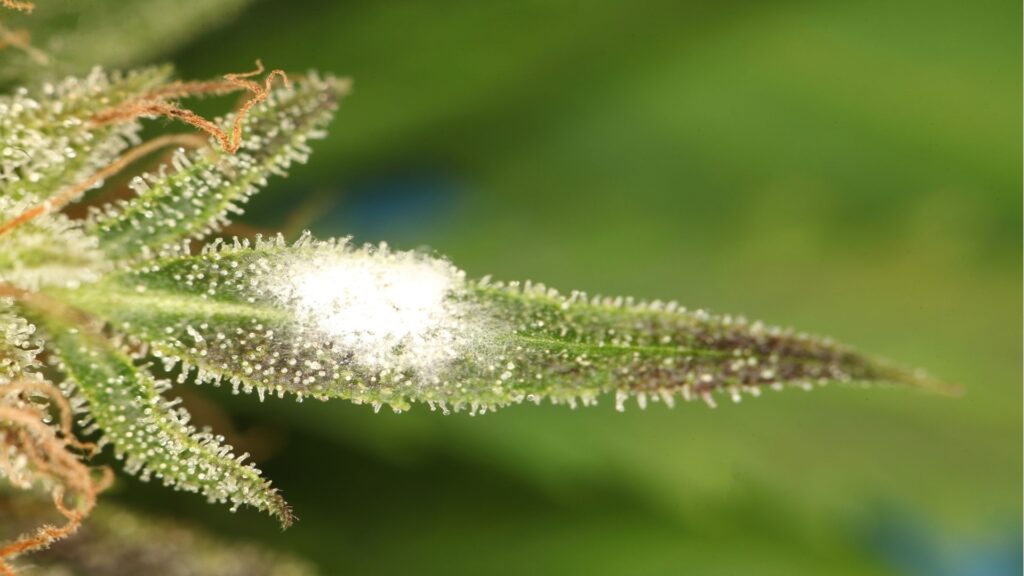
Thus, mold is a big downside of too much humidity and too low VPD on your plant. But there are also downsides to the humidity being too low and your VPD being too high:
- Your plants dry out.
- You plants don’t grow as big and healthy as they could.
- Your plants transpire so much that they pull too many nutrients through their roots, wasting money on excess nutrients and causing your plant to get nutrient burn.
You want your Cannabis VPD that’s not too high or too low, but just right. Coleman calls it the Goldilocks principle:
“So it’s very much a Goldilocks principle that, if it’s too dry, it’s not good, and if it’s too moist, it’s not good. It can affect our plants in very different ways, creating lack of health and unpredictable growth patterns. And ultimately in a production environment, predictability, repeatability is key. We want to see similar results, time after time, when we’ve got things dialed-in correctly.”— Coleman Retzlaff, Eastern Canada and East Coast Regional Sales Manager for Quest

So VPD is a single metric that you can monitor and react to that helps you maximize yields and keep your plants healthy. These ranges are shown on charts, supplied by QUEST and by others on the internet.
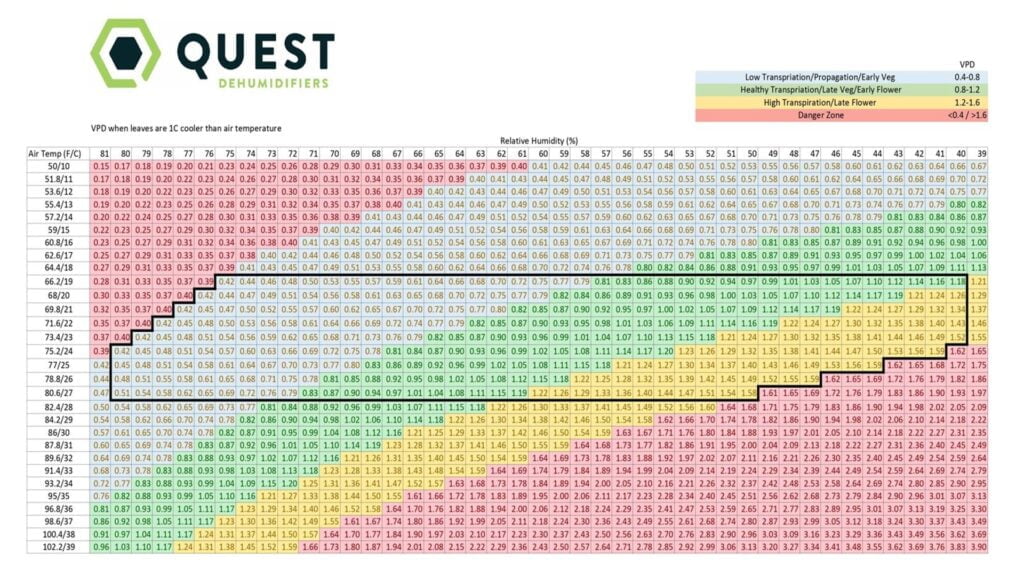
The charts have the temperature on one axis, humidity on the other axis, and the corresponding VPD metrics, measured in millibars (MB or mBAR), pounds per square inch (psi), or kilopascals (kPa). The charts are usually color coded, with the best ranges shown in one color (often green), the adjacent, acceptable ranges in another color, and the dangerous ranges outside that. But you don’t need only one chart, you actually need three. That’s because …
Optimal VPD Ranges Change With 3 Cannabis Growth Phases
What is key is that the optimal VPD range changes during the three phases of your cannabis plant’s grow cycle. QUEST reports the experience of Seth Lee, a successful adherent of VPD, (see here) that the VPD ranges for these three phases should be:
- Seedling/Clone: Seedlings and clones don’t have a developed root system, so maintain a low VPD to keep these young plants from losing too much moisture from their leaves. VPD should be between 4 to 7 millibars.
- Vegetative: As plants grow bigger, increase VPD to 9 to 12 millibars, which will increase the flow rate of water and drive nutrients through the plant.
- Flowering and late-flowering: Continue increasing VPD up to 15 millibars as plants mature.
“We’re taking a stepped approach of starting our plants with a very low vapor pressure, and stepping it in stages, almost like a child that, you take an infant to a toddler, toddler gets some legs under themselves to be able to begin to walk and into adolescence, and then into adulthood.”— Coleman Retzlaff, Eastern Canada and East Coast Regional Sales Manager for Quest
Coleman warns growers that temperature can change a lot during the course of the day, and especially when the lights go out. You can get higher relative humidity quickly, and also have lower transpiration rates in the dark. Therefore, your climate control equipment has to be able to react quickly to maintain a good VPD range.
Measure The VPD Of Your Plants, Not Just Your Grow Room
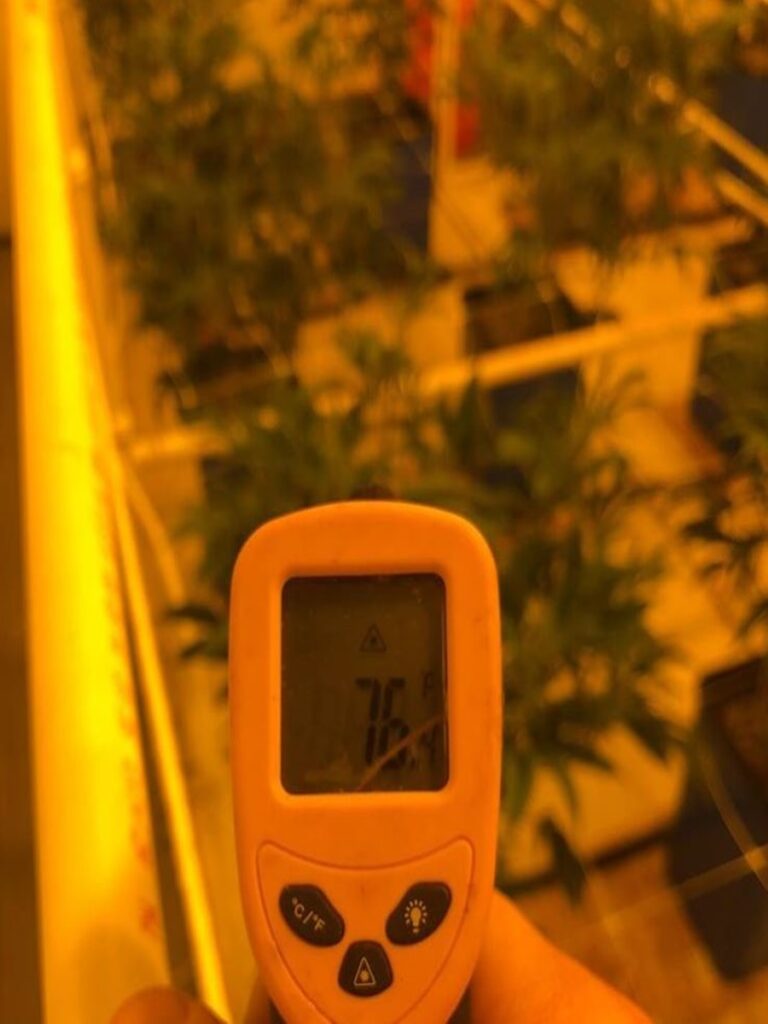
You measure Cannabis VPD by checking the surface temperature of your plants, as well as the air in your grow room. That’s because it’s the plants that matter and the plants’ surface temperature is usually lower than the air temperature — since plants transpire, that evaporation lowers the surface temperature.
You can get the leaf temperature with an infrared gun or thermometer, while some environmental control systems automatically pull in temperature and humidity measurements for both your grow room and your plant canopy.
However, Coleman reminds us that not all are cut out to do the complex math to compute VPD:
“I personally would go mad trying to make these measurements and calculations on a daily basis versus using a decent reference chart that I’m going to know that I am in a zone.”— Coleman Retzlaff, Eastern Canada and East Coast Regional Sales Manager for Quest

A quick comparison between %RH and VPD:
Relative humidity is the straight, linear percentage that the actual vapor pressure (AVP) is to the saturation vapor pressure (SVP). Relative humidity is expressed as a percentage.
RH is AVP divided by SVP (all at whatever the actual temperature is)
%RH= (AIRAVP / AIRSVP ) x 100 …then tack-on a % sign.
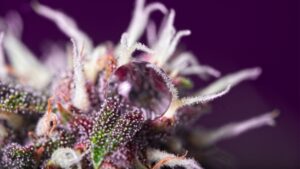
Vapor pressure deficit is the actual pressure difference (in units of pressure) between the AVP and the SVP. Since VPD tries to more accurately express what it is that the plant “feels,” the science has been to use the leaf temperature to calculate the SVP. This is because the leaf is the location where the saturated (100%RH) inner environment of the plant meets the, usually, much drier atmosphere.
VPD is the leaf-temperature SVP minus the product of the air-temperature SVP times the %RH
VPD= LEAF SVP – (AIR SVP x AIR%RH)
The plant-canopy temperature is sometimes substituted for the leaf temperature when calculating the SVP. Alternatively, some growers subtract 5°F from the room temperature to account for the cooling effect of the evaporating water exiting the leaves. One issue with using leaf temperature is that various leaves are in differing amounts of light exposure ranging from full exposure to complete shade; another is that as VPD decreases (as it gets more humid), any cooling effect also decreases.

We’ve simplified VPD to take some of the fear out of a very difficult concept. We hope you understand it better now, and that it’s really as simple as the Goldilocks principle. Not too wet, not too dry, just right. And what tools and charts you can use to find those VPD zones that are just right for your plants.
If you do want to learn more about Cannabis VPD, Coleman offered The Grower’s Source Expo attendees two documents:
- A simple bullet point list including the Goldilocks Principle and a VPD chart to convey VPD to your colleagues and friends
- A more detailed reference document about VPD that includes the math and additional content.
Scroll below to access Coleman Retzlaff GS profile or related discussions thread for more insights.
Watch this session at The Grower’s Source Expo here.
Featured Image Credits: Canva Stock Photos

Want to keep the discussion going?
Log onto The Grower’s Source App to ask a question of our group of experts, or to read up on the latest comments on this topic.
You can also engage your fellow master and hobby growers about many other cannabis topics on your Grower’s Source App.

CONNECT
Connect and maintain relationships between you and other Canadian cannabis industry growers.
COLLABORATE
Overcome challenges together with your fellow growers, learn, develop collective knowledge and a global competitive edge.
GROW
Grow better, aim for sustainability, quality, and cost-effectiveness.




